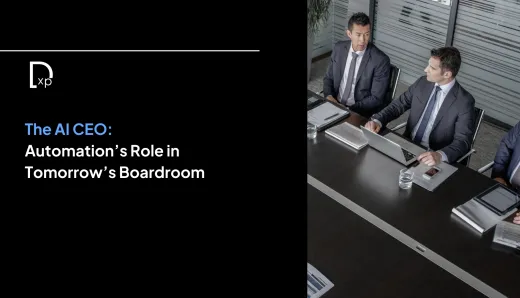Digital Transformation: Myths vs. Reality

Digital transformation (DX) has become a critical driver of success and innovation over time. Yet, many organizations struggle to fully embrace its potential due to prevalent myths and misconceptions. Understanding these myths and recognizing the realities of DX is essential for C-suite executives to steer their organizations toward successful digital integration. This blog aims to debunk common myths about digital transformation and provide a clear roadmap, supported by realistic examples and actionable insights, to guide executives in leveraging DX effectively.
The Importance of Understanding Digital Transformation
Before diving into the myths and realities, it’s essential to understand why digital transformation is crucial. Digital transformation involves integrating digital technologies into all aspects of a business, fundamentally changing how it operates and delivers value to customers. It is a holistic approach that requires shifts in culture, processes, and customer engagement strategies. Effective digital transformation can lead to increased efficiency, improved customer experiences, and sustained competitive advantage.
1. Myth: Technology is Fundamental to Digital Transformation
Reality: Digital transformation extends far beyond the realm of technology. It's a holistic approach that incorporates culture, strategy, and processes.
Example: A successful digital transformation requires a shift in organizational mindset and culture. For instance, a company may adopt cloud technology, but without changing how teams collaborate and approach problem-solving, the full potential of this technology remains untapped. Digital transformation should align with customer needs and business strategies, using technology as an enabler, not the focal point.
2. Myth: Digital Transformation Success Rests on the Shoulders of a Single Leader
Reality: Effective digital transformation requires a collective leadership approach involving the entire executive team and beyond.
Example: While the CEO can set the vision for digital transformation, other leaders such as the CIO, CTO, and CDO play crucial roles in implementing this vision. For instance, the CTO might focus on integrating new technologies, while the CDO ensures digital initiatives align with business strategies. A collaborative leadership effort ensures that digital transformation is holistic and comprehensive.
3. Myth: Data Must Be Clean and Consolidated Before Starting Digital Transformation
Reality: Digital transformation can and should begin even if data is not perfectly clean or consolidated.
Example: A retail company might start its digital transformation journey by using existing customer data to implement a basic recommendation engine. As the transformation progresses, data quality can be improved iteratively, ensuring more accurate and reliable insights. This approach prevents delays and allows the organization to start reaping benefits early on.
4. Myth: Transformation Causes Downsizing and Job Losses
Reality: Digital transformation often leads to the reallocation and augmentation of workforce roles, not just downsizing.
Example: Automating routine tasks can free up employees to focus on strategic, value-added activities. A financial services company might use AI to handle basic customer queries, allowing staff to concentrate on complex financial advisory services. This shift not only improves efficiency but also enhances job satisfaction and creates new opportunities for employee growth.
5. Myth: Digital Transformation Always Involves Emerging Technologies
Reality: Digital transformation can be effectively achieved using mainstream technologies.
Example: Companies like Airbnb and Uber revolutionized their industries using widely adopted technologies like mobile apps and GPS, rather than emerging technologies like blockchain or AI. The focus should be on solving customer problems with the most appropriate technology, whether new or existing.
6. Myth: Digital Transformation Lacks Tangible Value
Reality: Digital transformation offers significant and measurable value, impacting business growth and efficiency.
Example: A manufacturing company might implement IoT devices to monitor equipment performance in real time. This initiative can lead to reduced downtime, improved productivity, and substantial cost savings, providing clear, tangible benefits that can be measured and tracked over time.
7. Myth: Digital Transformation is a One-Time Project
Reality: Digital transformation is an ongoing, iterative process that requires continuous innovation and adaptation.
Example: A retail chain may start its digital transformation by launching an e-commerce platform. Over time, it can incorporate features like personalized recommendations, AI-driven customer service, and omnichannel integration. Continuous improvement and adaptation ensure the business remains competitive and responsive to market changes.
8. Myth: Digital Transformation necessitates a Comprehensive Overhaul
Reality: Digital transformation can be approached incrementally, focusing on high-impact areas first.
Example: A healthcare provider might begin its digital transformation by digitizing patient records, leading to immediate improvements in data accessibility and patient care. Subsequent phases could include telemedicine services and AI-driven diagnostics. This phased approach allows for manageable changes and sustained progress.
9. Myth: Legacy Apps Prevent True Digital Transformation
Reality: Legacy systems can be modernized and integrated into a digital transformation strategy.
Example: A financial institution might use APIs to connect legacy banking systems with modern digital platforms, enabling seamless data flow and customer experiences without completely overhauling existing infrastructure. This strategy preserves valuable investments while modernizing operations.
10. Myth: Only large businesses need to transform
Reality: Digital transformation is crucial for businesses of all sizes, including small and medium-sized enterprises (SMBs).
Example: A local bakery could use social media and e-commerce platforms to reach a broader audience and increase sales. By leveraging digital tools, SMBs can compete with larger companies, access new markets, and enhance customer engagement.
The Way Ahead
The path to digital transformation is ongoing and dynamic. Organizations must remain agile and responsive as technology evolves and customer expectations shift. Here are some steps to guide future digital transformation efforts:
- Embrace Continuous Learning and Innovation: Foster a continuous improvement and innovation culture, encouraging employees to explore new ideas and technologies.
- Leverage Data and Analytics: Use data-driven insights to inform strategic decisions and optimize business processes.
- Invest in Talent and Skills Development: Equip your workforce with the skills and knowledge needed to navigate the digital landscape.
- Foster Collaboration and Cross-Functional Teams: Encourage collaboration across departments to ensure a unified and cohesive approach to digital transformation.
- Stay Customer-Centric: Keep customer needs and experiences at the forefront of your digital transformation strategy, ensuring that all initiatives enhance customer value.
Follow these steps to have a smooth path towards digital transformation. Ready to embark on your digital transformation journey?
Read our latest blog on Digital Transformation ROI: Measuring Success and Impact to have a better understanding. Visit our website and read more of our insightful blogs to explore how to help you leverage technology to drive innovation and growth.




